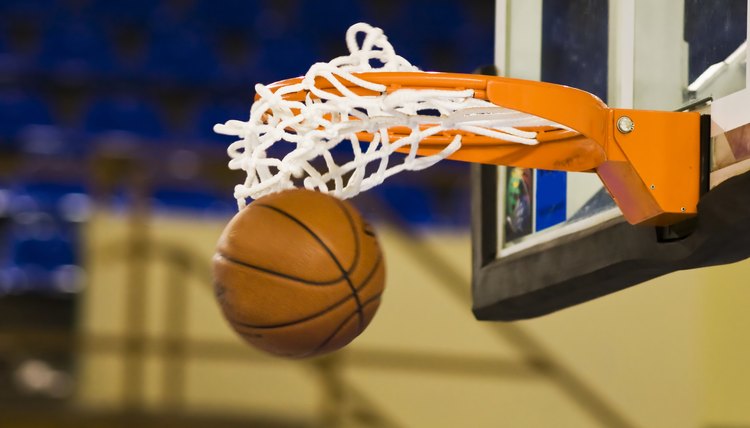The History of Basketball Balls

Basketball came about because a doctor and physical education teacher wanted a sport his students could play indoors during the harsh Massachusetts winter. His hopes were the game would help players work on hand-eye coordination, jumping, running, shooting and ball handling, but not a lot of player contact. His hopes were fulfilled with basketball. The game has not changed much over the years, but its ball has seen quite a few developments.
First Game Ball
Dr. James Naismith invented the game of basketball in 1891, but the game didn’t get its own ball until three years later. Early basketball players used a soccer ball, which they threw into half-bushel peach baskets hung on opposite ends of the gym.
First Basketball Ball
Naismith called on A.G. Spalding & Bros. to come up with a ball specifically for the game of basketball in 1894, the NBA website says. The company created a leather ball held together with laces and weighing in at fewer than 20 oz. The first basketball had a circumference of 32 inches, which was four inches bigger than a soccer ball.
Development
Basketball laces went by the wayside in 1948, with the new molded construction and a smaller circumference of 30 inches becoming official in 1949. Basketball design advanced again, with its traditional four panels changed to eight, and the NBA adopted this as its official ball design in 1970. The NBA also adopted Spalding’s full-grain leather ball as its official ball in 1983, although other leagues and players use a variety of different brands, some made of synthetic rubber or rubberized materials rather than leather. Specialized basketballs for smaller players, high school players and specific for indoor or outdoor use have also come into play.
Advancements
Improving the basketball is a constant quest, Encyclopdia.com notes. One such improvement was the “Hole-in-One” basketball that featured dimples like a golf ball. The dimples were meant to improve the player’s grip so he could easily palm the ball. Another was an outer basketball shell made of sweat-absorbing polyurethane that had microscopic moisture-wicking holes. Spalding was busy with its own new developments, creating an orange and white game ball with a microfiber composite cover that’s now the official ball in the WNBA. The company came up with a ball that includes a built-in pump in 2001 and a new design for the official NBA ball in 2006. The updated design features a microfiber composite cover, rather than leather, and two interlocking panels rather than the standard eight.
References
